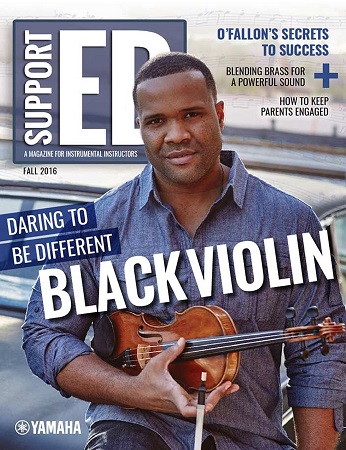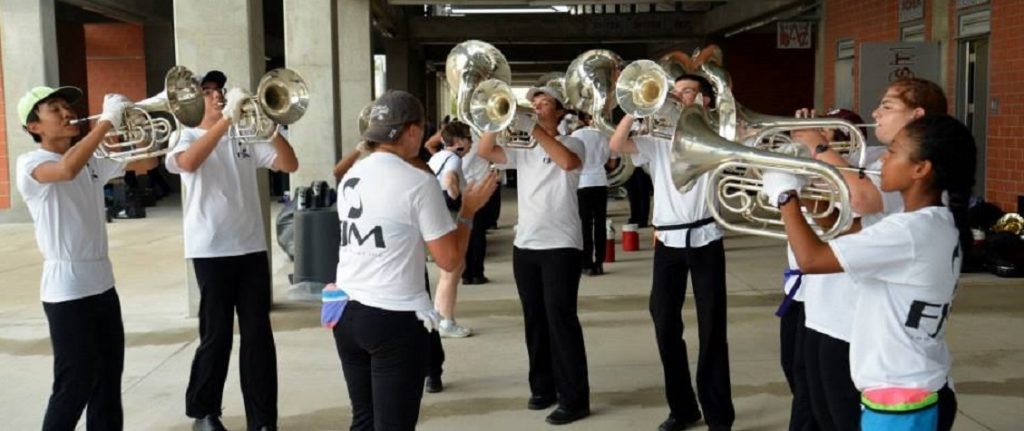Leadership Opportunities with First Concerts
Give older students a chance to lead during the first performance of the school year.
The start of a new school year always presents an opportunity to set the course for a successful year of music-making, and nothing is better for charting that course than effective leadership from directors and students.
Let’s take a look at how just one event — the year’s first concert for beginning students — can provide opportunities for our more experienced students to add value to this very special occasion. At the middle school level, the more advanced students could help with planning/executing this initial concert for the beginning level students. Providing an “informance” concert is as much about getting the parents excited as it is the students. It’s also an effective way to showcase to these “beginning parents” how quickly students can acquire music-making skills. In addition, parents will see firsthand some of the more long-lasting results of being in the program, i.e., the older classmates exhibiting both leadership and musical skills. So what roles can our more experienced students play? Although your students will certainly come up with their own ideas, here are a few to help prime the pump:
1. Ask your more experienced students to come up with short, humorous skits to demonstrate the musical growth from one year to the next, and then insert appropriately within the various parts of the concert. One idea might be to select a few measures from the beginning level method book for a first-year student to perform, then transition to a second-year student performing the same few measures demonstrating improved playing skills, then the third-year student doing the same with, for example, added ornamentation. Another skit idea might be developed to demonstrate effective practicing at home, where one student is practicing in a noisy environment (i.e., TV is on, brothers and sisters playing in the background, etc.), working under poor lighting conditions while lying on the floor, contrasted with another student in a quality practicing environment — appropriate chair, lighting, music stand, attentive parent, etc. Your student leaders will come up with a variety of creative ideas. All you have to do is give them the opportunity.
2. Put your best foot forward by asking some of your student leaders to welcome the audience at the door with an inviting smile and warm greeting. Dressed in their uniform with name badge attached, they could distribute programs and/or NAMM’s advocacy brochure, “Why Learn to Play Music?” This beautifully designed brochure has been revised to include the newest research and statistics highlighting the many benefits of music education and is available in English and Spanish. You can order these free brochures through your local music dealer or online by clicking here.
3. Working with the high school director, arrange for high school student leaders to assist the beginning-level students with tuning, organization and preparation (i.e., appropriate unified appearance of uniforms such as tucking in of shirts) prior to the start of the concert. Extra sets of hands are always needed, and the beginning-level students will enjoy the attention they get from the high school students who they view as “rock stars.”
4. Another way to involve high school students is to ask them to provide introductory performances (solos, duets or small ensembles) prior to the formal start of the concert. These performances could take place on the stage or in the lobby as the audience enters the venue. The concert could also conclude with the entire high school marching band making a surprise entrance in full uniform while playing the school fight song or another appropriate selection. The high school students could then “high-five” the beginners and congratulate them on their first performance. What an exciting way to end the event!
5. Finally, if you haven’t used “First Performance for Band” or “First Performance for Orchestra,” you might consider using it this year. These comprehensive resources are available through your local dealer or directly from Hal Leonard. These turn-key packages provide a framework for a short (30 minute) introductory, informance concert and also feature a written narration, sheet music, parts, sample letter, plus programs and certificates for beginning band/orchestra students. They are designed to be used after just seven short weeks to get the students playing right away!
We get only one chance to make a first impression, so let’s make the most of it by giving our more experienced music-makers leadership opportunities in what will be a memorable first concert for our beginners and their families. The result will certainly net years of additional music-making experiences for those who are beginning this coming year and who, in future years, will help craft the First Performance Concert for others.
This article originally appeared in the Fall 2016 issue of Yamaha SupportED. To see more back issues, find out about Yamaha resources for music educators, or sign up to be notified when the next issue is available, click here.

















